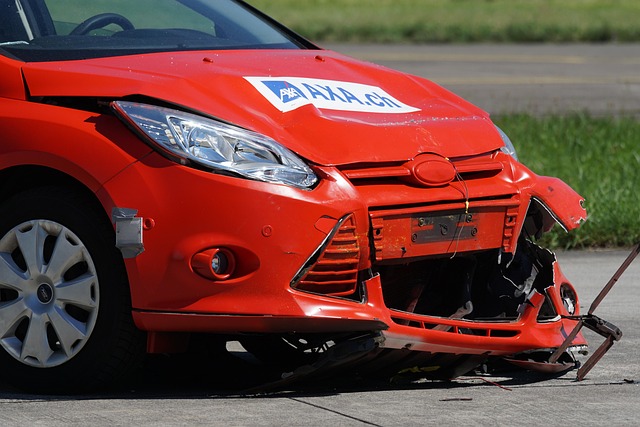Business Liability Coverage is a vital component of comprehensive business insurance, protecting companies from financial losses due to negligence or harm caused to third parties. This includes personal injury and property damage. A robust policy also encompasses Property Insurance for physical assets and Business Interruption Coverage for lost revenue during shutdowns. Understanding liability coverage, assessing risks, and effectively navigating claims processes are key to maximizing the protective benefits of business insurance, ensuring stability, and fostering trust among stakeholders.
Business insurance is not just a nice-to-have, it’s a necessity. Protecting your business from liabilities is crucial for its longevity and resilience. This comprehensive guide delves into the essence of Business Liability Coverage, breaking down complex concepts into digestible insights. From understanding key components to navigating claims processes, we explore real-world scenarios where this coverage proved vital. Discover how evaluating risks can safeguard your business against potential pitfalls, ensuring peace of mind in an unpredictable world.
Understanding Business Liability Coverage: What It Is and Why It Matters

Business Liability Coverage, an integral part of any comprehensive business insurance strategy, is designed to protect companies from financial loss resulting from claims of negligence or harm caused to third parties. This coverage extends beyond typical damage to property; it encompasses a wide range of potential liabilities, including personal injury and property damage suffered by customers, employees, or passersby on your premises.
Understanding the essence of Business Liability Coverage is paramount for any business owner. It acts as a financial shield, safeguarding against significant legal costs and damages that may arise from lawsuits. By availing this coverage, businesses demonstrate their commitment to risk management and responsible operations, fostering trust among customers, partners, and stakeholders alike.
Key Components of a Comprehensive Business Insurance Policy

A comprehensive business insurance policy is an indispensable tool for any company, safeguarding against potential risks and financial losses. At its core, such a policy typically includes several key components that collectively offer multifaceted protection. One of the primary elements is Business Liability Coverage, which shields businesses from claims related to bodily injury or property damage caused to third parties. This ensures that your business is financially secured in case of accidents, injuries, or damages occurring on your premises or during operations.
Another crucial component is Property Insurance, designed to protect physical assets such as buildings, equipment, and inventory. This coverage helps replace or repair damaged or destroyed property, offering peace of mind by mitigating the financial impact of unforeseen events like natural disasters, theft, or vandalism. Additionally, many policies include Business Interruption Coverage, which compensates businesses for lost revenue and additional expenses incurred during temporary shutdowns due to insured events. These interconnected elements collectively form a robust framework, enabling businesses to navigate challenges with confidence and resilience.
Different Types of Liability and How They're Covered

In the realm of business insurance, understanding liability coverage is paramount. Different types of liability can emerge from various operations and interactions, necessitating tailored protection. One such category is business liability coverage, which shields businesses against claims of bodily injury or property damage they may cause to others. This includes accidents involving customers on premises, injuries to employees, or damages resulting from products sold.
The scope of this coverage extends beyond direct physical harm. It also encompasses legal expenses and damages arising from lawsuits related to these liabilities. For instance, if a business is sued over product liability, the insurance policy can cover not only the financial settlement but also the costs of defense and court fees. This comprehensive approach ensures businesses are protected against potential financial disasters, enabling them to navigate these challenges with greater resilience.
Real-World Scenarios: When Business Liability Coverage Saves the Day

In the dynamic landscape of business, unforeseen events and legal liabilities can arise at any moment, posing significant risks to companies of all sizes. This is where Business Liability Coverage steps in as a vital shield. Consider a scenario where a customer slips and falls on a slick floor in a retail store, leading to injuries and a subsequent lawsuit. Without adequate business insurance, the financial burden could be immense, potentially threatening the survival of the business. However, with comprehensive Business Insurance in place, the policy can cover medical expenses, legal fees, and any damages awarded, ensuring the company’s financial stability.
Another real-world example involves a contractor who mistakenly causes property damage while working on a client’s premises. Liable for the repairs, the contractor faces substantial costs. Fortunately, their business insurance policy includes coverage for such incidents, mitigating the financial impact and allowing them to rectify the issue promptly. By safeguarding against these potential pitfalls, Business Liability Coverage enables businesses to focus on growth and innovation, knowing they are protected against the unexpected.
Evaluating Your Risk: Identifying Potential Liabilities for Your Business

Evaluating your business’s risks is a crucial step in determining the appropriate level of business insurance protection. Potential liabilities can arise from various sources, including accidents on your premises, product defects, personal injury claims, and even legal issues related to your business practices. Start by assessing your day-to-day operations and identifying any activities that could expose your company to financial loss or legal responsibility.
Consider common risks specific to your industry, such as workplace injuries in manufacturing or professional negligence claims in consulting. Keep records of past incidents or complaints to understand recurring issues. Regular risk assessments enable you to make informed decisions when choosing business insurance policies, ensuring you’re adequately covered for the unique challenges your business faces.
Navigating Claims Process: What to Expect and How to Prepare

Navigating the claims process is a crucial aspect of managing your business’s liability coverage, and understanding what to expect can help reduce stress during challenging times. When a claim occurs, businesses should be prepared to take immediate action. The first step involves reviewing and understanding your business insurance policy, including the specific terms related to liability coverage. This knowledge empowers you to effectively communicate with potential claimants and your insurance provider.
Preparing for the claims process includes documenting all relevant details of the incident, such as dates, locations, and any evidence that could support your case. Efficient communication between your team, legal representatives (if applicable), and insurance agents is vital. Keep records of all communications and ensure everyone involved understands the next steps to streamline the process and potentially reduce costs associated with a claim.
